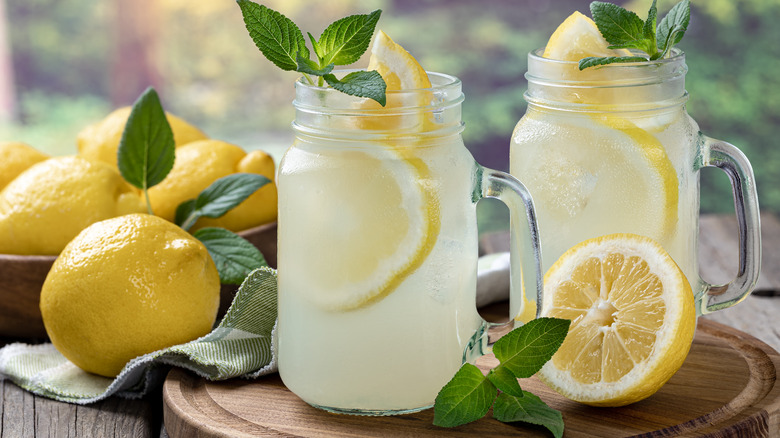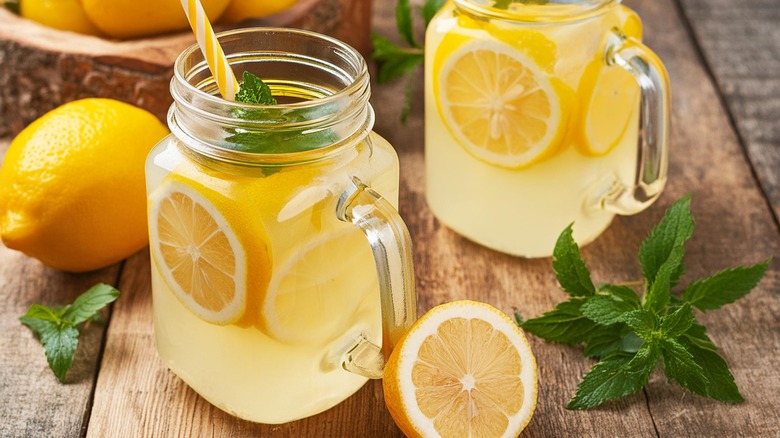How Prohibition Helped Make Lemonade A Staple Beverage In America
Ultimately, the most productive aspects of the Prohibition Era were its role in the growth of organized crime and the eventual development of the Great Depression. But, for lemonade fans, the controversial era was a huge springboard that launched lemonade into the American foodie scene for good. The origin of lemonade itself goes way further back in history. Overseas, the beverage had already found a raving fanbase in Paris as a fashionable refresher during the 1600s. But Prohibition played a major role in the beverage becoming super popular in America.
The 18th Amendment to the U.S. Constitution was ratified in 1920, marking the official beginning of Prohibition, which lasted until 1933. However, the root of Prohibition began long before that in the early 1800s with the efforts of various religious revivalist and temperance efforts nationwide as well as a new wave of Protestantism opposing saloon culture. As early as the 1830s, some states were passing legislation limiting the quantity of alcohol sales. This push culminated in the founding of the Women's Christian Temperance Union (WCTU) in 1873.
The WCTU championed simple, classic lemonade as an alternative beverage to alcohol. But, once it put lemonade on the map, sweet-tart-lovin' fans didn't seem to need much convincing to welcome the bevy with open arms. According to the Museum of Ventura County, one Sunkist brand slogan from the early 1800s even chimed in, "Good-bye to liquor, here's to lemonade." (Although, nowadays, familiarizing yourself with Prohibition Era cocktails can actually help you order better at the bar, for the record.)
Lemon-aiding the temperance movement as a booze alternative
Lemonade "soft opened" in America with the European immigrants who brought it with them during the 1700s. The first lemonade recipe published in an American cookbook appeared in "The Virginia House-wife" in 1824, but it was closer to a frozen sherbet treat than a beverage. Incidentally, a few years later, another more bizarre recipe for non-alcoholic "delicious lemonade" appeared in the first cocktail book ever written ("Oxford Night Caps," 1827), and it's an even further cry from the sugary lemon-water fans know today.
With whipped calves foot gelatin, proto-lemonade was a beverage arguably further from God's light than any hard liquor. But the early to mid-1800s also coincided with the rise of on-the-go dried lemonade powder, which were a hit among folks on the American frontier as they could help mask the taste of bad water. By the 1830s, Schweppes fizzy lemonade was a widely available product across Europe.
The drink took the U.S. main stage when 19th president Rutherford B. Hayes (in office from 1877 to 1881) banned alcohol from the White House, leading the Prohibition opposition to nickname his wife, First Lady and outspoken abstinence proponent Lucy Webb Hayes, "Lemonade Lucy." (In addition to lemonade, Lucy Hayes also help turn the American food scene on to angel food cake.) The rising popularity of circus-going during the early 1900s also helped secure lemonade's popularity in the public eye, as well as the invention of pink lemonade.

